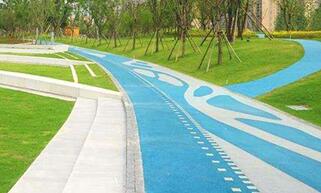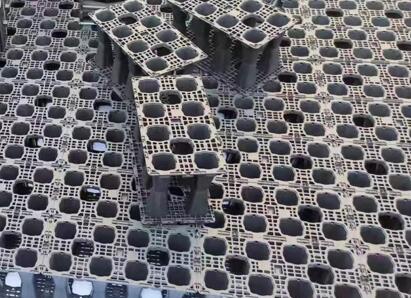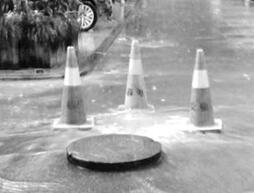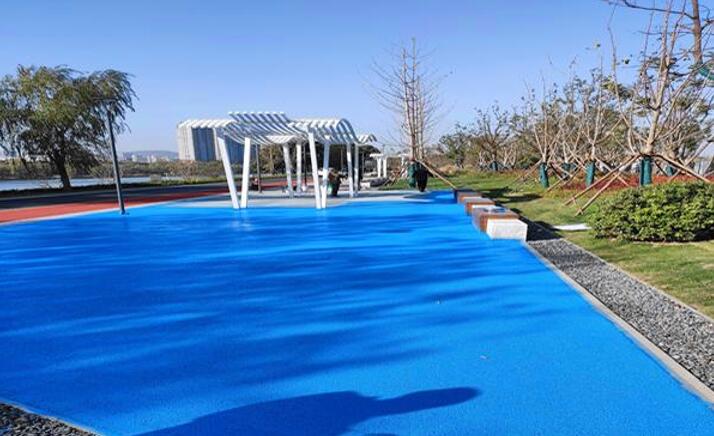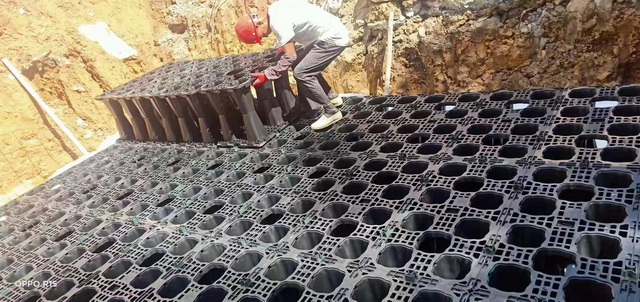The construction of Sponge City is in progress
Sponge City Construction: Tackling Urban Waterlogging and Enhancing Ecological Sustainability
In late March, the southern region will welcome the rainy season, which poses a challenge to urban areas. Therefore, sponge cities have been included in the construction scope in the government work reports of some cities this year.
Recently, a journalist from China Business News visited Chengdu’s sponge city experimental platform, the Huoshui Park, and witnessed the process of rainwater infiltration, recovery, and reuse on urban roads. At the same time, the park also serves nearby residents for leisure and entertainment, creating a picture of harmonious coexistence between humans and nature.
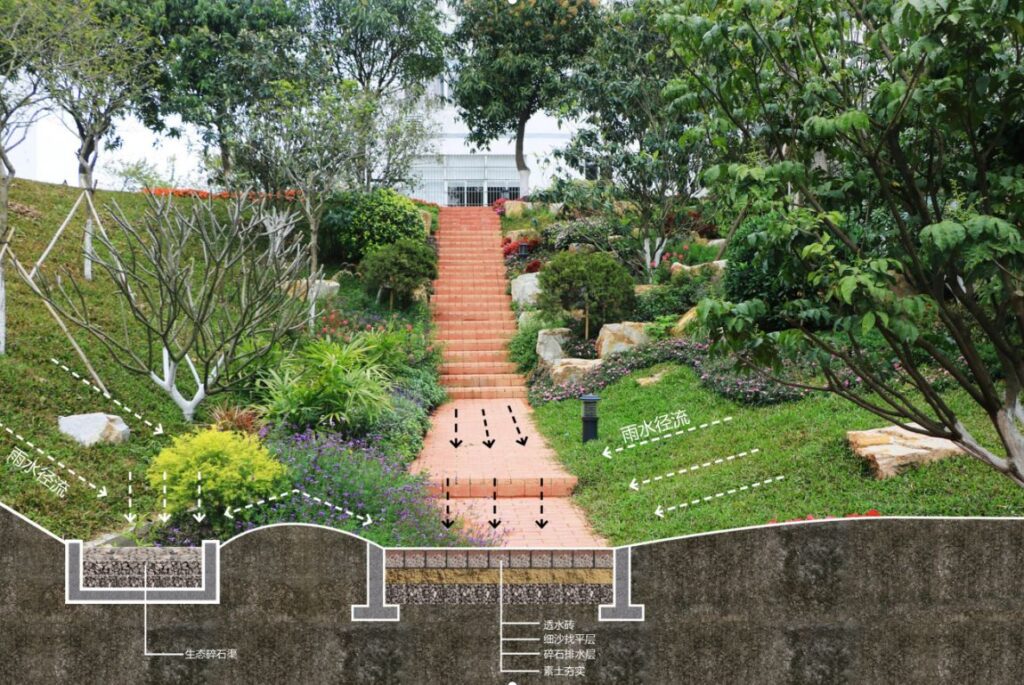 However, the construction and promotion of sponge cities is not achieved overnight. Xia Linjun, the director and senior engineer of the Municipal Planning and Design Institute of Sichuan Branch of Panghua Group Co., Ltd., told reporters that people’s understanding of sponge cities is gradually in place, and sponge cities are now transitioning from the pilot demonstration stage to the rapid construction stage. However, the construction of sponge cities involves the entire city’s water system, and requires a systematic layout of the urban water ecosystem.
However, the construction and promotion of sponge cities is not achieved overnight. Xia Linjun, the director and senior engineer of the Municipal Planning and Design Institute of Sichuan Branch of Panghua Group Co., Ltd., told reporters that people’s understanding of sponge cities is gradually in place, and sponge cities are now transitioning from the pilot demonstration stage to the rapid construction stage. However, the construction of sponge cities involves the entire city’s water system, and requires a systematic layout of the urban water ecosystem.
Rain quietly enters the ground. “The ground is made up of permeable bricks, coarse sand, geotextiles, crushed stones, and natural ground. Rainwater drainage pipelines are installed below, and rainwater naturally infiltrates and enters the PP storage tank during light rain,” a person in charge of Chengdu Water Park told reporters. The rainwater that enters the storage tank can be recycled for use in greening, municipal miscellaneous use, landscape water, flushing public toilets, etc.
 The person in charge demonstrated to the reporters on-site the water-absorbing effect of permeable ground on the “sponge city experiment platform” in the park. The reporters observed that after simulating heavy rain for five minutes, there were obvious puddles on the ordinary floor tiles, while the permeable floor tiles and gravel remained moist and hardly had any standing water. It is reported that this kind of permeable ground not only facilitates citizens’ travel on rainy days, but also provides the possibility of rainwater recycling, allowing the city roads to have more “breathing space”.
The person in charge demonstrated to the reporters on-site the water-absorbing effect of permeable ground on the “sponge city experiment platform” in the park. The reporters observed that after simulating heavy rain for five minutes, there were obvious puddles on the ordinary floor tiles, while the permeable floor tiles and gravel remained moist and hardly had any standing water. It is reported that this kind of permeable ground not only facilitates citizens’ travel on rainy days, but also provides the possibility of rainwater recycling, allowing the city roads to have more “breathing space”.
The Chengdu Huoshui Park was built in 1998 and is located along the Fuhe River in Chengdu, covering an area of approximately 26,000 square meters. It is the world’s first urban ecological environment park with water as its theme. In 2017, in response to the needs of sponge city construction and water ecological civilization, Huoshui Park further improved its natural rainwater treatment system and ecological riverbank system, and together with the Emeishan plant ecological community in Huoshui Park, formed a large sponge city system of “mountains, waters, forests, fields, and lakes” as a shared community of life.
In addition to the “sponge-type road”, the Living Water Park also has a set of natural sewage treatment systems. This system, consisting of anaerobic pools, hydraulic sculptures, plant pond beds, fish ponds, and tailwater reuse facilities, runs downstream from high to low along the terrain, and can purify 400 tons of sewage to Class III water every day. The entire system is also a part of the park landscape. Young people in Chinese Hanfu can often be seen taking pictures by the hydraulic sculptures and fish ponds. It is reported that the system has never experienced operational problems in the more than 20 years since it was first built, and has become a research case for many scientific research institutions.
By utilizing these facilities, the Aqua Park has become a test platform for Sponge Cities construction. What are Sponge Cities? The “Twenty Requirements for Further Clarifying the Construction of Sponge Cities” (hereinafter referred to as “Sponge 20”) issued by the Ministry of Housing and Urban-Rural Development in April 2022 provide an explanation: Sponge City construction should protect and utilize urban natural ecological spaces such as mountains, rivers, wetlands, farmland, forests, and grasslands through comprehensive measures, and leverage the absorption and slow release effects of buildings, roads, green spaces, and water systems on rainwater to enhance the city’s ability to retain, infiltrate, and conserve water, achieve natural storage, permeation, and purification of water, and promote the formation of an ecological, safe, and sustainable urban water cycle system.
According to the requirements of the “Sponge City 20 Articles”, the construction of sponge cities in various regions should be tailored to local conditions. We should adhere to problem orientation and goal orientation, and flexibly choose a combination of measures such as permeation, retention, storage, purification, utilization, and drainage, based on factors such as climate and geological conditions, site conditions, planning objectives and indicators, economic and technological feasibility, and reasonable public demands. This will enhance the local capacity for rainwater absorption, retention and storage.
In fact, as early as 2015, China began the first batch of sponge city pilot projects. With the advancement of technology, the requirements for the construction of sponge cities in various places are becoming more and more standardized. In February of this year, Changchun City issued the “Changchun City Sponge City Construction Management Regulations (Draft for Soliciting Opinions)”, which standardized planning and construction, operation and maintenance, and supervision and management, and proposed detailed requirements such as “roof greening, rainwater storage and utilization measures should be adopted according to local conditions to improve the rainwater accumulation, retention and utilization level of buildings and residential areas”.
Guangzhou also explicitly states that by the end of 2025, more than 45% of the built-up areas in the city will meet the requirements of sponge city construction.
The area of sponge city construction in Kunming, China, has reached more than 70 square kilometers, and an additional 26 square kilometers of sponge city will begin construction this year.
Wang Jiazhuo, the Director and Senior Engineer of Ecological and Municipal Institute of China Academy of Urban Planning and Design, reminds us that the construction of a sponge city is a systematic project, and it is necessary to adhere to systematic planning. Currently, China is vigorously promoting the systematic and comprehensive advancement of sponge city construction. It is crucial to have a correct understanding of the systematic and comprehensive advancement of sponge city construction.
 The so-called comprehensive promotion refers to prioritize the urban central area and reasonably consider the integrity of surrounding catchment areas. Within this scope, all new, renovated, and expanded projects must implement the requirements of sponge city construction. The so-called systematic promotion means to coordinate the integration of blue, green, and gray facilities, consider the entire process of rainwater runoff from generation to discharge into receiving water bodies, coordinate planning, construction, and management, and orient towards solving the problem of flash floods within the protection standard. The optimization of facility combinations and the reasonable layout of various facilities should be aimed at the synergistic optimal performance to avoid pursuing local goals at the expense of overall effects and prevent problems from incomplete resolution due to fragmented construction.
The so-called comprehensive promotion refers to prioritize the urban central area and reasonably consider the integrity of surrounding catchment areas. Within this scope, all new, renovated, and expanded projects must implement the requirements of sponge city construction. The so-called systematic promotion means to coordinate the integration of blue, green, and gray facilities, consider the entire process of rainwater runoff from generation to discharge into receiving water bodies, coordinate planning, construction, and management, and orient towards solving the problem of flash floods within the protection standard. The optimization of facility combinations and the reasonable layout of various facilities should be aimed at the synergistic optimal performance to avoid pursuing local goals at the expense of overall effects and prevent problems from incomplete resolution due to fragmented construction.
On the subject of tackling urban waterlogging
In “20 Sponge Cities”, it is mentioned that the construction of sponge cities is one of the important measures to alleviate urban water logging, which can effectively cope with heavy rainfall within the return period for flood control design, and make cities have good “resilience” and “adaptability” in adapting to climate change and resisting rainstorm disasters. So, what role has sponge city played in preventing and controlling urban water logging at the current stage?
The person in charge of Chengdu Huoshui Park explained that permeable bricks and crushed stones can achieve the effect of “not getting feet wet in light rain and no water accumulation in moderate rain”, but in heavy and torrential rains, excess rainwater will still be discharged into the municipal pipeline network. In other words, simply having permeable ground surfaces cannot completely solve the problem of urban water logging. Wang Jiazhuo also stated that the construction of sponge cities is advantageous for alleviating urban water logging, controlling combined sewer overflow pollution, reducing the runoff pollution of diversion areas, and easing water shortage problems, “However, sponge cities are not omnipotent, for example, they cannot solve the problem of basin floods, nor can they ensure that no matter how heavy the rain is, there will never be ‘urban flooding’.”
 Xia Linjun stated that urban water logging is a typical urban disease, which is a systematic problem that includes not only the destruction of urban river systems that have not yet been restored but also the problem of imperfect urban drainage facilities resulting from large-scale urban construction. Building a sponge city is not just about permeable paving. A sponge city is a systemic project that includes three aspects: firstly, ensuring the smooth flow of urban river systems and building urban flood prevention and safety; secondly, improving urban drainage pipes to ensure the safe conveyance of urban rainwater runoff to river bodies; and thirdly, building sponge facilities at the source to store, slow down and discharge.
Xia Linjun stated that urban water logging is a typical urban disease, which is a systematic problem that includes not only the destruction of urban river systems that have not yet been restored but also the problem of imperfect urban drainage facilities resulting from large-scale urban construction. Building a sponge city is not just about permeable paving. A sponge city is a systemic project that includes three aspects: firstly, ensuring the smooth flow of urban river systems and building urban flood prevention and safety; secondly, improving urban drainage pipes to ensure the safe conveyance of urban rainwater runoff to river bodies; and thirdly, building sponge facilities at the source to store, slow down and discharge.
Although some cities still have local problems of “seeing the sea,” our urban water logging sites, areas, and frequencies have been continuously reduced and lowered.
“Sponge 20” pointed out that the construction of sponge cities should be transformed from “end-point” governance to “source reduction, process control, and systematic governance”, and from a primarily engineering measure to a combination of ecological and engineering measures, in order to avoid simply promoting the construction of sponge cities as engineering projects.
Li Junqi, dean of the School of Environmental and Energy Engineering of Beijing University of Civil Engineering and Architecture, also believes that for urban flood control, the “1 3 1” system components of urban water conservancy flood control, reduction of source emissions, drainage pipes and channels, drainage risk elimination, intelligent early warning and emergency management are indispensable. In particular, for heavy rain and extreme heavy rain that exceed the standard for flood control, a smart early warning and emergency management system should be established to respond. The urban water conservancy flood control system is the cornerstone of ensuring urban flood safety, which should be comprehensively managed and improved from the perspective of the watershed, including the surrounding areas and rivers flowing through and upstream and downstream of the city and its tributaries.
 However, flood control is only one of the important goals of sponge cities. Li Junqi pointed out that sponge cities also aim to control runoff pollution, collect and use rainwater, and improve water environment ecology. To systematically establish a modern urban rainwater system that complies with the concept of sponge city construction, it is necessary to firmly integrate the sponge city concept into various fields and processes of urban development, adopt a “sponge” mentality, combine sponge city construction with urban renewal, ecological restoration, flood control, resilient city construction, and carbon reduction through green-gray rainwater facilities, and further improve the urban living environment and service level.
However, flood control is only one of the important goals of sponge cities. Li Junqi pointed out that sponge cities also aim to control runoff pollution, collect and use rainwater, and improve water environment ecology. To systematically establish a modern urban rainwater system that complies with the concept of sponge city construction, it is necessary to firmly integrate the sponge city concept into various fields and processes of urban development, adopt a “sponge” mentality, combine sponge city construction with urban renewal, ecological restoration, flood control, resilient city construction, and carbon reduction through green-gray rainwater facilities, and further improve the urban living environment and service level.



